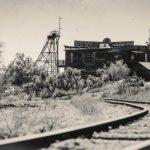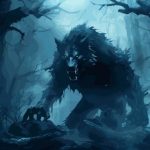 Creepy
Creepy  Creepy
Creepy  Technology
Technology 10 Scientific Breakthroughs of 2025 That’ll Change Everything
 Our World
Our World 10 Ways Icelandic Culture Makes Other Countries Look Boring
 Misconceptions
Misconceptions 10 Common Misconceptions About the Victorian Era
 Mysteries
Mysteries 10 Strange Unexplained Mysteries of 2025
 Miscellaneous
Miscellaneous 10 of History’s Most Bell-Ringing Finishing Moves
 History
History 10 Great Escapes That Ended Right Back in Captivity
 Weird Stuff
Weird Stuff 10 Fascinating Things You Might Not Know About Spiders
 Food
Food 10 Everyday Foods You Didn’t Know Were Invented by the U.S. Military
 History
History 10 Odd Things Colonial Americans Kept at Home
 Creepy
Creepy 10 More Representations of Death from Myth, Legend, and Folktale
 Technology
Technology 10 Scientific Breakthroughs of 2025 That’ll Change Everything
 Our World
Our World 10 Ways Icelandic Culture Makes Other Countries Look Boring
Who's Behind Listverse?

Jamie Frater
Head Editor
Jamie founded Listverse due to an insatiable desire to share fascinating, obscure, and bizarre facts. He has been a guest speaker on numerous national radio and television stations and is a five time published author.
More About Us Misconceptions
Misconceptions 10 Common Misconceptions About the Victorian Era
 Mysteries
Mysteries 10 Strange Unexplained Mysteries of 2025
 Miscellaneous
Miscellaneous 10 of History’s Most Bell-Ringing Finishing Moves
 History
History 10 Great Escapes That Ended Right Back in Captivity
 Weird Stuff
Weird Stuff 10 Fascinating Things You Might Not Know About Spiders
 Food
Food 10 Everyday Foods You Didn’t Know Were Invented by the U.S. Military
 History
History 10 Odd Things Colonial Americans Kept at Home
10 Wild Facts About the Making of Popular Westerns
Although Western films are no longer in their heyday—the Western cinematic gold rush lasted from the mid-1940s to the mid-1960s—they’re still much loved. Gone are the days of the 1950s when Westerns outnumbered all other genres combined. Along with the enduring classics, a modern gem often hits the screen.
Whether current or classic, movies set in the Wild West were sometimes just as wild to film, so here are 10 interesting behind-the-scenes facts about some of the most popular Westerns to ever gallop across the screen.
Related: The Ten Most Lethal Gunslingers of the Old West
10 A Train Hit the Camera While Filming
For the shot of the train rushing toward the screen in High Noon (1952), the camera had to be placed directly on the tracks. While it’s a fantastic shot, it nearly killed director Fred Zinnemann and cameraman Floyd Crosby.
As the train approached, the smoke turned from white to black, which Zinnemann and Crosby—who were lying behind the camera on the tracks—thought looked great. What they didn’t know was that black smoke meant that the train’s brakes were failing. They realized at the last minute that the train wasn’t going to stop and moved out of the way just in time. But the camera tripod got caught on the rail and ended up being hit.
Thankfully, the film magazine survived the crash, and the shot of the approaching train was used in the final cut of the film.[1]
9 An Actor Committed Suicide While Wearing His Costume
Once Upon a Time in the West (1968) opens with three gunslingers ambushing Harmonica (Charles Bronson) at a train station. One of the assailants, Knuckles, was played by Al Mulock, who tragically committed suicide by jumping off his hotel balcony while still wearing his cowboy outfit from earlier that day.
In a 1998 interview, screenwriter Mickey Knox explained that he was in a room on a lower floor with production manager Claudio Mancini, and they “saw the body coming down, past our window.” The jump didn’t actually kill Mulock, so Mancini drove him to the hospital (he died of a punctured lung en route). But before they left, director Sergio Leone demanded that he “get the costume, we need the costume” because they hadn’t finished filming. He wanted it for whoever was going to be Mulock’s double.[2]
8 Paul Newman Did Some of His Own Stunts
The scene in Butch Cassidy and the Sundance Kid (1969) where Cassidy (Paul Newman) shows off on his bicycle was supposed to be filmed with a stuntman. Despite having spent a few days learning the tricks, the stuntman either couldn’t perform on the day of filming or (according to some reports) declared it too dangerous. Newman simply decided to do the tricks himself. The only one he didn’t do was the crash backward through the fence; cinematographer Conrad L. Hall stepped in for that shot.
Robert Redford (the Sundance Kid) also wanted in on the action—specifically, he wanted to run along the top of the train car—but Newman was against it. Rather than being annoyed at being upstaged, it was because of safety concerns. “I don’t want any heroics around here,” he said. “I don’t want to lose a co-star.” Redford agreed in the end.[3]
7 Steve McQueen and Yul Brynner Hated Working Together
Filming The Magnificent Seven (1960) proved to be a challenge thanks to some on-set friction between Steve McQueen and Yul Brynner. McQueen was a rising star at the time, and he took a dislike to Brynner, who had a bigger role. McQueen deliberately made distracting noises—such as jangling his shotgun shells or flipping a coin—during scenes when Brynner was speaking. He would also destroy the mound of dirt that Brynner stood on to match the height of the other actors.
Eventually, Brynner got so fed up with McQueen’s ribbing that he got physical. “Brynner came up to me in front of a lot of people and grabbed me by the shoulder,” McQueen said in his 2005 biography. “He was mad about something. He doesn’t ride well and knows nothing about guns, so maybe he thought I represented a threat.” However, co-star Robert Vaughn had a different idea about why McQueen was antagonistic: “Steve was intensely competitive. It wasn’t enough just to be successful—he had to be more successful than anyone else.”
In his final days, McQueen apologized to Brynner for his behavior, calling him up to say, “You coulda had me kicked off the movie when I rattled you, but you let me stay and that picture made me, so thanks.”[4]
6 The First Film to Feature Audible Flatulence
Although films with sound started being made during the 1920s, it took decades for the first audible fart to hit the screen (or, rather, the speakers). While Yasujirō Ozu’s Good Morning (1959) is full of farts, the noises are made by musical instruments, which somewhat softens the blow. The first realistic flatulence came in 1974’s Blazing Saddles, which includes a scene of cowboys around a fire eating beans and farting.
“Blazing Saddles for me was a film that truly broke ground. It also broke wind… and maybe that’s why it broke ground,” said director Mel Brooks. He didn’t include the scene to make movie history; he simply wanted to portray reality: “I mean, you can’t eat so many beans without some noise happening there.”
That iconic scene isn’t the movie’s only fart joke either. Governor Lepetomane (played by Brooks himself) was named after a 19th-century French flatulist whose name translates to “fartomaniac.”[5]
5 Stuntman Could Easily Have Died During Coach Drag Stunt
Enos Edward “Yakima” Canutt was hired by director John Ford for Stagecoach (1939) on the recommendation of the film’s star, John Wayne. Although there are many impressive stunts throughout the film, one particular stunt looks suicidal: the coach drag. Canutt jumps from his horse onto one of the stagecoach’s lead horses, but then he’s shot and falls between the horses. After being dragged along for a bit, he lets go, and the stagecoach rides over him.
The sequence was incredibly dangerous to film, but a few safety measures were in place. First of all, the horses had to gallop fast—at a speed of 45 mph (72 km/h). Canutt explained that this was “so they’ll run straight. If they run slow, they move around a lot.” Metal bars were also placed between each pair of horses to create a small gap in which Canutt could safely be dragged without being trampled. And when it looks like he falls, he actually catches himself on a modified tongue-tie. As for letting go, Canutt simply said, “You’ve got to hold your elbows close to your body, or that front axle will knock them off.”
After witnessing the dangerous stunt, Ford told Cannut that even if they failed to capture it, he’d “never shoot that again.” Thankfully, it was filmed perfectly.[6]
4 Oreos Were Used to Wrangle a Buffalo
Animals can be notoriously tricky to work with, but the spectacular buffalo hunt—technically, a bison hunt—in Dances with Wolves (1990) was worth the effort. Filming the scene required a staggering 3,500 bison plus 20 wranglers, 10 pickup trucks, and a helicopter.
“The trucks began herding the buffalo at five o’clock in the morning in hopes that they would be in position by eleven,” producer Jim Wilson told Entertainment Weekly. This lengthy setup meant that the scene took eight days to film.
The filmmakers also used two tame bison for certain shots. Musician Neil Young allowed the production to borrow his pet bison, Mammoth, and the other, Cody, was the mascot of a meat company. “Cody was obsessed with Oreo cookies,” Wilson said. “You could be 100 yards away, pull out an Oreo, and he’d take off like a bullet straight for you.” The terrifying moment when an enraged bison charges at a boy was achieved by holding up an Oreo for sweet-toothed Cody.[7]
3 A Real Earp Had a Role in a Western
If you’ve ever read the full credits for Tombstone (1993), you may have noticed that the name Wyatt Earp actually appears twice. The first time is, of course, the character played by Kurt Russell, while the second time is the name of the actor playing Billy Claiborne.
Although credited as Wyatt Earp, the actor was born Glenn Wyatt Earp, and he’s a distant relative—a fifth cousin to be precise—of the famous lawman. Although likely an advantage for getting a role in Tombstone, he said the name usually works against him. “Actually, there has been greater skepticism of me as an actor because of my name,” he explained in a 1993 interview. “Casting directors would call up my agent and say: ‘Is this guy for real?’”
In a 2023 Facebook post, Earp explained that he originally had a bigger role in Tombstone, but many of his scenes were cut, including “the stagecoach robbery where I killed Mr. Fabian and the gunfight where I was killed by Billy Breckinridge.”[8]
2 A Stuntman Lost a Leg While Filming
It’s rumored that a stuntman was killed during a fight scene in How the West Was Won (1962), but in reality, he wasn’t killed, and the accident didn’t happen during filming. During “The Outlaws” chapter, a gunfight breaks out on a moving train, and Bob Morgan was working as the stunt double of George Peppard. Morgan had safely completed his shots and was resting against the train when some fiberglass logs fell off the car and knocked him onto the tracks. He was then crushed by the train’s axle.
Although Morgan lived, he didn’t get away lightly: He lost one of his legs and some of the bones in his spine and was facially disfigured. His stuntman days were over, but he did continue to act. His missing leg even led to a few pegleg-specific roles, including Iron Horse (1967), Chisum (1970), and Scarlet Buccaneer (1976).[9]
1 A Bridge Explosion Had to Be Unexpectedly Filmed Twice
The scene where Blondie (Clint Eastwood) and Tuco (Eli Wallach) blow up the bridge in The Good, the Bad, and the Ugly (1966) is iconic. Still, the cameras weren’t actually rolling the first time the structure was destroyed. Everything was ready, and director Sergio Leone just needed to wait for the correct lighting before the signal—the Spanish word “vaya”—could be given to the person responsible for blowing the bridge.
However, someone said the word about a different element of the scene, and the explosives crew member thought it was the signal and lit the ignition before the cameras were ready. Despite the enormity of this mistake, Leone apparently just said “let’s go eat” and waited for the construction crew to rebuild the expensive bridge. Thankfully, the cameras were rolling the second time around.[10]








